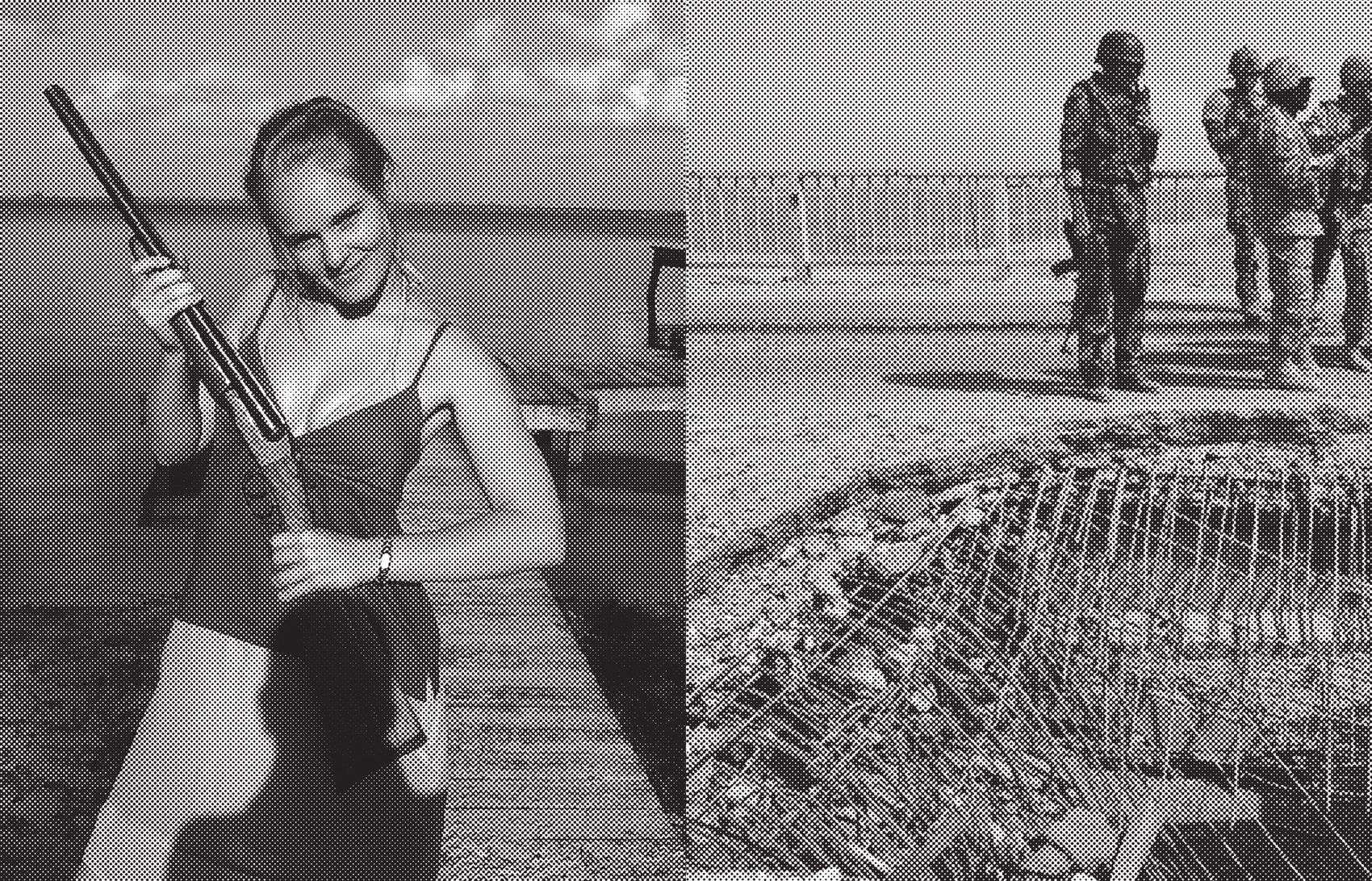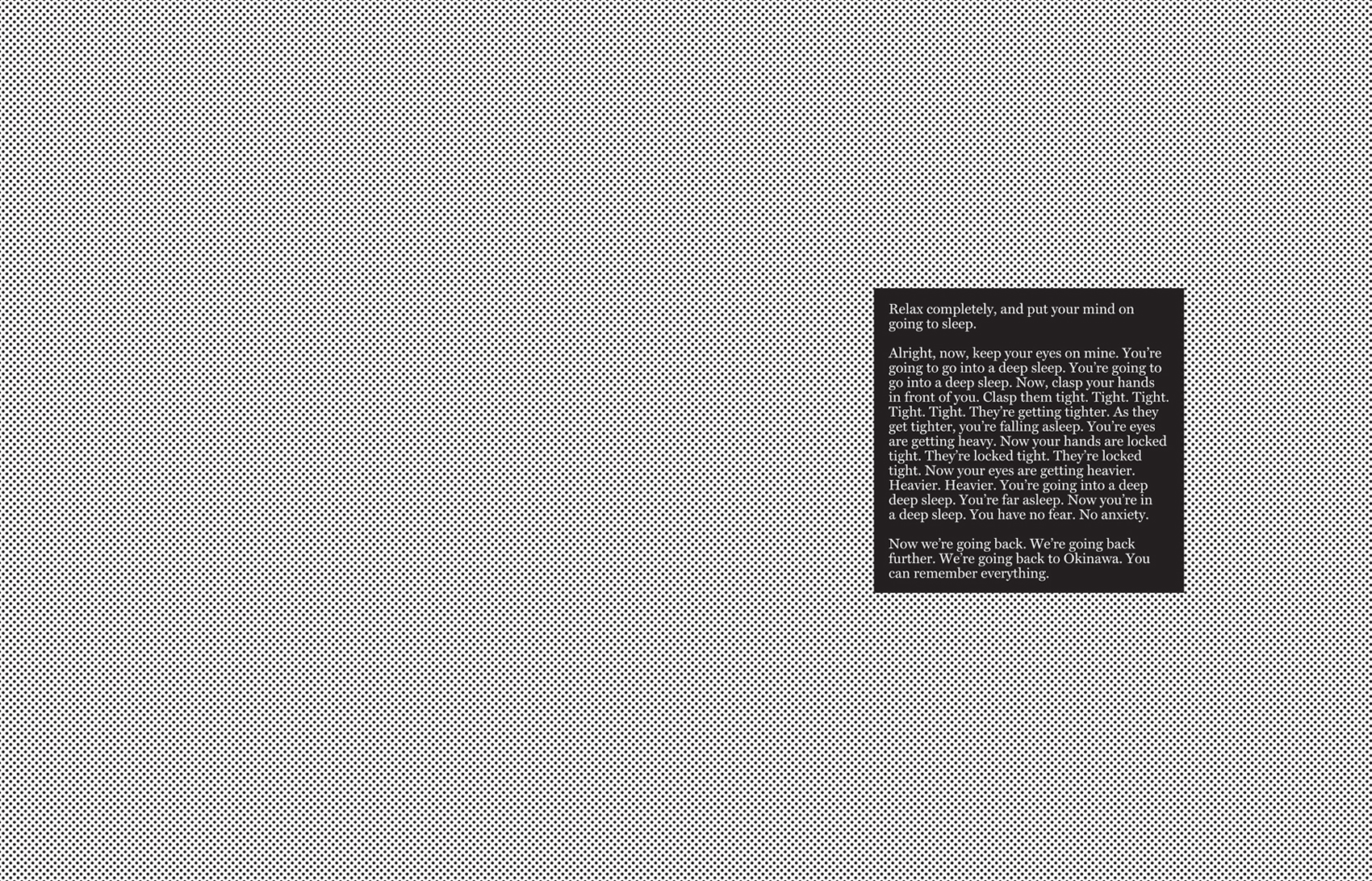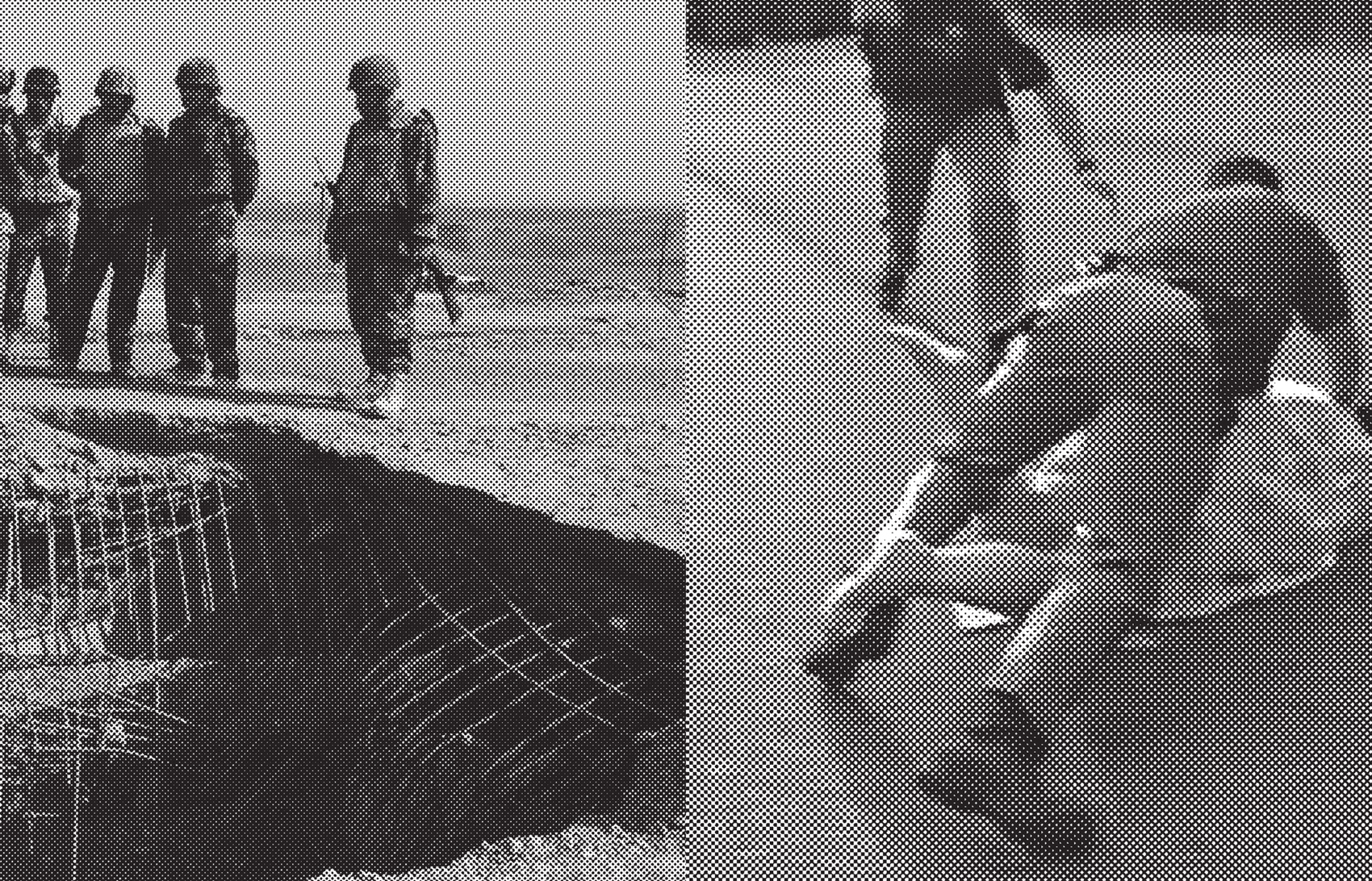Lone Wolf, by David Schulz, Published by
The Book Bakery (Publication Studio, Toronto),
ISBN 978-0-9869089-4-1, 94 pages,
Color Laser Printer, Perfect-bound, 7.8 x 10″,
open trade edition, 2009. To purchase, please email
davidschulzworks at gmail dot com. $25.
![]()
![]()
![]()
![]()
Above: Double-page spreads from Lone Wolf.
David Schulz was selected by Joachim Schmid to present and launch his latest photobook project, Lone Wolf, at C/O Berlin Book Days on May 24, 2012, in Berlin, Germany. The trade edition was originally published by The Book Bakery (Publication Studio, Toronto). North American publication date: August, 2012.
In common english usage, a lone wolf is someone who acts alone, outside of a group network or command structure, like the animal who lends its name to this characteristic. When a local citizen insulates himself against humanity, stocking up on canned goods, bottled water, and weaponry while writing anti-social manifestos, he is acting as a lone wolf. Clint Eastwood’s character, Dirty Harry, plays a lone wolf within the police department, making decisions based on his own individual brand of “justice.” And when the United States invades Iraq for its own undisclosed reasons, without the support of the United Nations, it acts as a lone wolf.
Lone Wolf is a picture book whose name is derived from the provision of the U.S.A. Patriot act which seeks to create a legal framework that allows the government to surveil individuals not associated with any group or country who are believed to be engaged in terrorist activities. Comprised of screenshots from reality television shows depicting expressions of physical force within three sectors of american society: police, local militia, and the U.S. military, excerpts from congressional hearings of the 112th and 113th congresses on the Patriot act give context to the images. The photographic images have been converted into large halftone dot compositions, which might imply an information flow—or lack of—that exposes the roots of suspicion and intolerance that culminate in statements like “see something, say something.”
Structurally, having re-purposed time-based video and film as a series of stills, the book reconfigures these stills, filmically, by placing each image so that it begins on the recto, and continues onto the subsequent spread’s verso page, ie. each image begins on one spread and ends on the next spread. This physical strategy references the idea of media as a form of collective memory, which allows us to have a personal experience from the ever-growing pool of produced events within our global digital community. It is also a consideration of the idea that memory is bound to perception—we perceive our memories—a notion that places remembering in the present (as opposed to accessing ‘fixed’ memory cards in our brains). Each time we experience something new, it is processed within ourselves in relation to our memories.
It is within this matrix that Lone Wolf appropriates a third textual form, a series of transcripts from the documentary film, Let There Be Light (1946), by John Huston, which consist of interactions between psychiatrists and american veterans suffering from post-traumatic stress disorder during WWII. The film examines hypnotic and psycho-narcotic therapies for the treatment of these patients.
The Book Bakery (Publication Studio, Toronto),
ISBN 978-0-9869089-4-1, 94 pages,
Color Laser Printer, Perfect-bound, 7.8 x 10″,
open trade edition, 2009. To purchase, please email
davidschulzworks at gmail dot com. $25.




Above: Double-page spreads from Lone Wolf.
David Schulz was selected by Joachim Schmid to present and launch his latest photobook project, Lone Wolf, at C/O Berlin Book Days on May 24, 2012, in Berlin, Germany. The trade edition was originally published by The Book Bakery (Publication Studio, Toronto). North American publication date: August, 2012.
In common english usage, a lone wolf is someone who acts alone, outside of a group network or command structure, like the animal who lends its name to this characteristic. When a local citizen insulates himself against humanity, stocking up on canned goods, bottled water, and weaponry while writing anti-social manifestos, he is acting as a lone wolf. Clint Eastwood’s character, Dirty Harry, plays a lone wolf within the police department, making decisions based on his own individual brand of “justice.” And when the United States invades Iraq for its own undisclosed reasons, without the support of the United Nations, it acts as a lone wolf.
Lone Wolf is a picture book whose name is derived from the provision of the U.S.A. Patriot act which seeks to create a legal framework that allows the government to surveil individuals not associated with any group or country who are believed to be engaged in terrorist activities. Comprised of screenshots from reality television shows depicting expressions of physical force within three sectors of american society: police, local militia, and the U.S. military, excerpts from congressional hearings of the 112th and 113th congresses on the Patriot act give context to the images. The photographic images have been converted into large halftone dot compositions, which might imply an information flow—or lack of—that exposes the roots of suspicion and intolerance that culminate in statements like “see something, say something.”
Structurally, having re-purposed time-based video and film as a series of stills, the book reconfigures these stills, filmically, by placing each image so that it begins on the recto, and continues onto the subsequent spread’s verso page, ie. each image begins on one spread and ends on the next spread. This physical strategy references the idea of media as a form of collective memory, which allows us to have a personal experience from the ever-growing pool of produced events within our global digital community. It is also a consideration of the idea that memory is bound to perception—we perceive our memories—a notion that places remembering in the present (as opposed to accessing ‘fixed’ memory cards in our brains). Each time we experience something new, it is processed within ourselves in relation to our memories.
It is within this matrix that Lone Wolf appropriates a third textual form, a series of transcripts from the documentary film, Let There Be Light (1946), by John Huston, which consist of interactions between psychiatrists and american veterans suffering from post-traumatic stress disorder during WWII. The film examines hypnotic and psycho-narcotic therapies for the treatment of these patients.